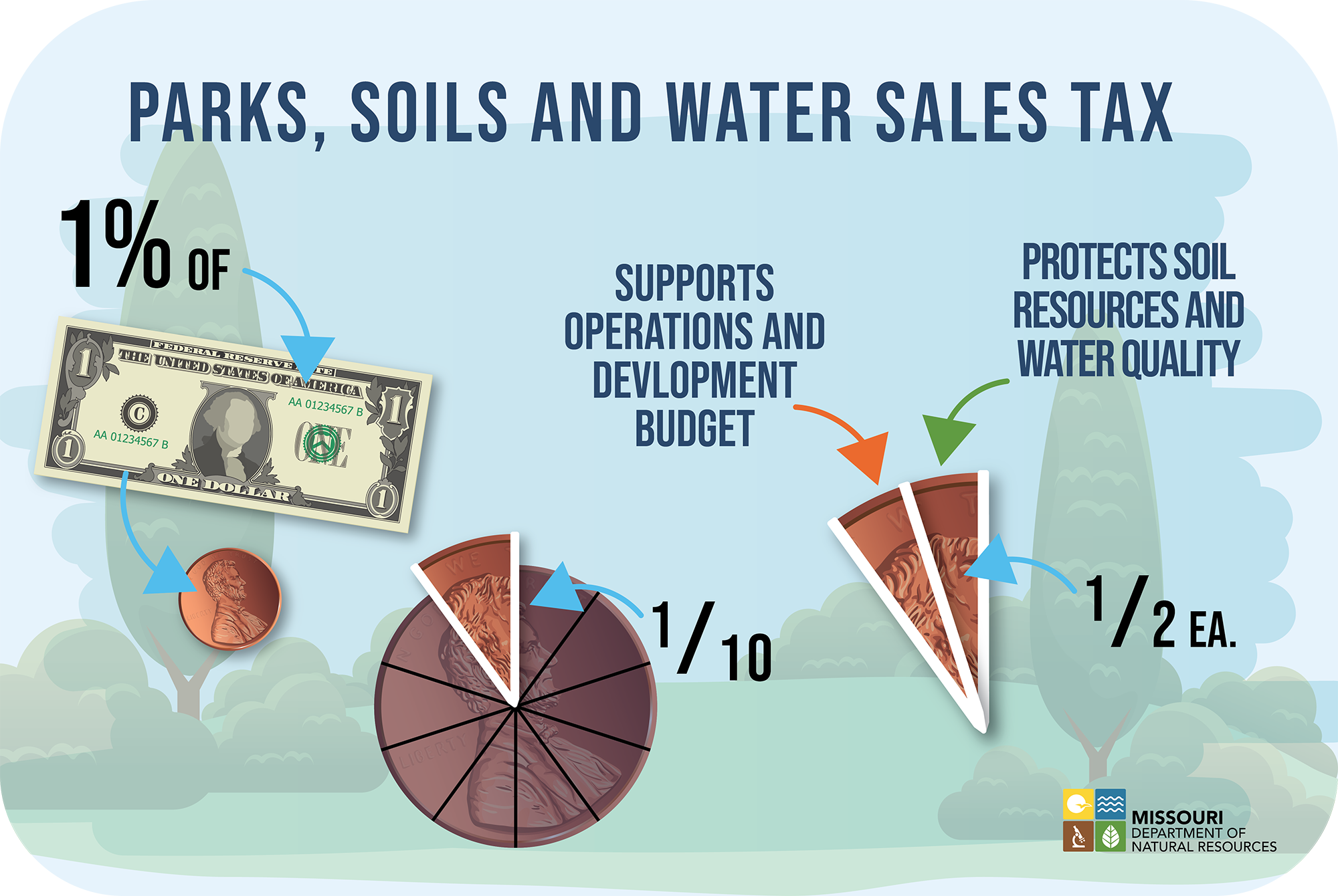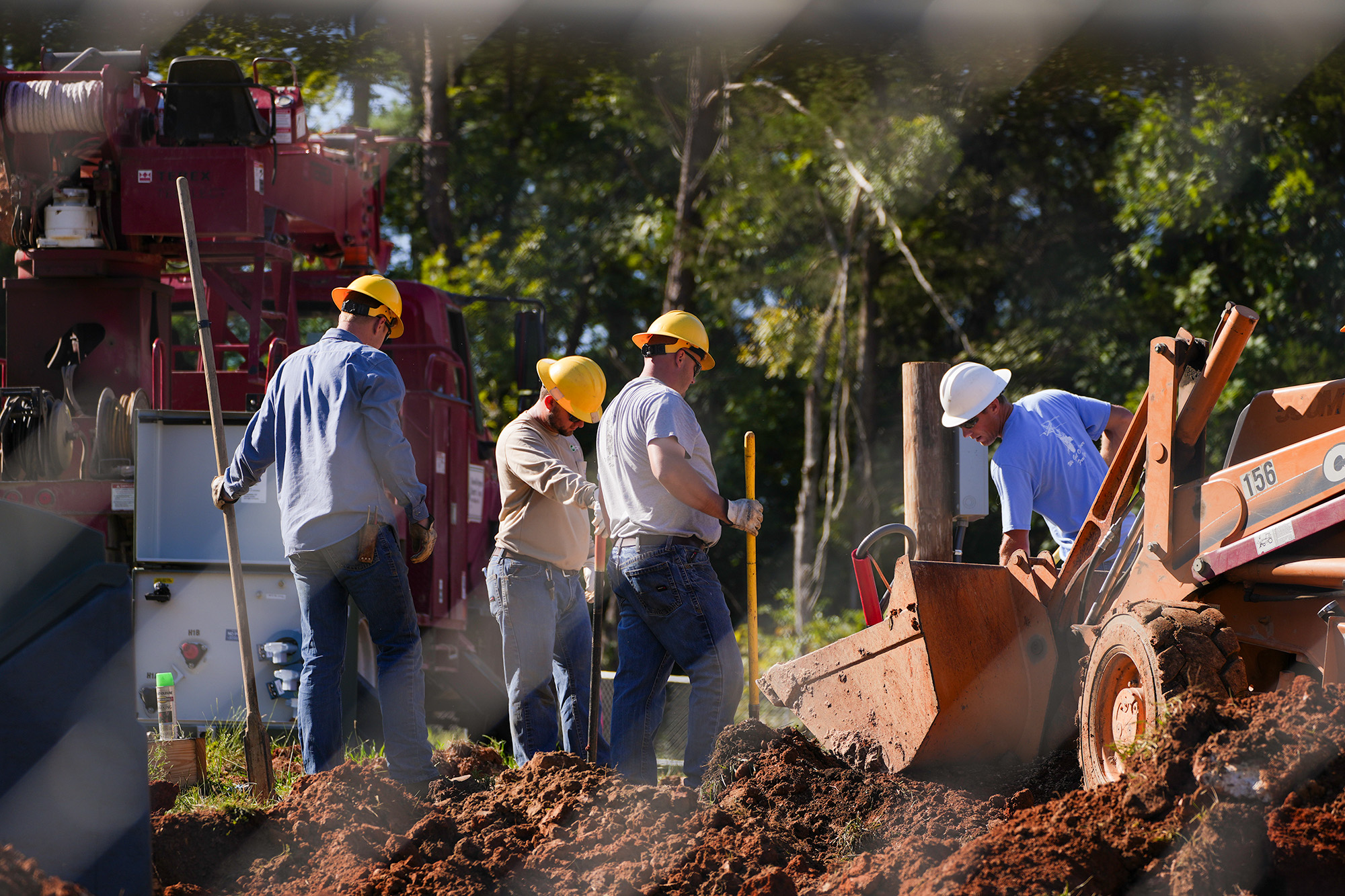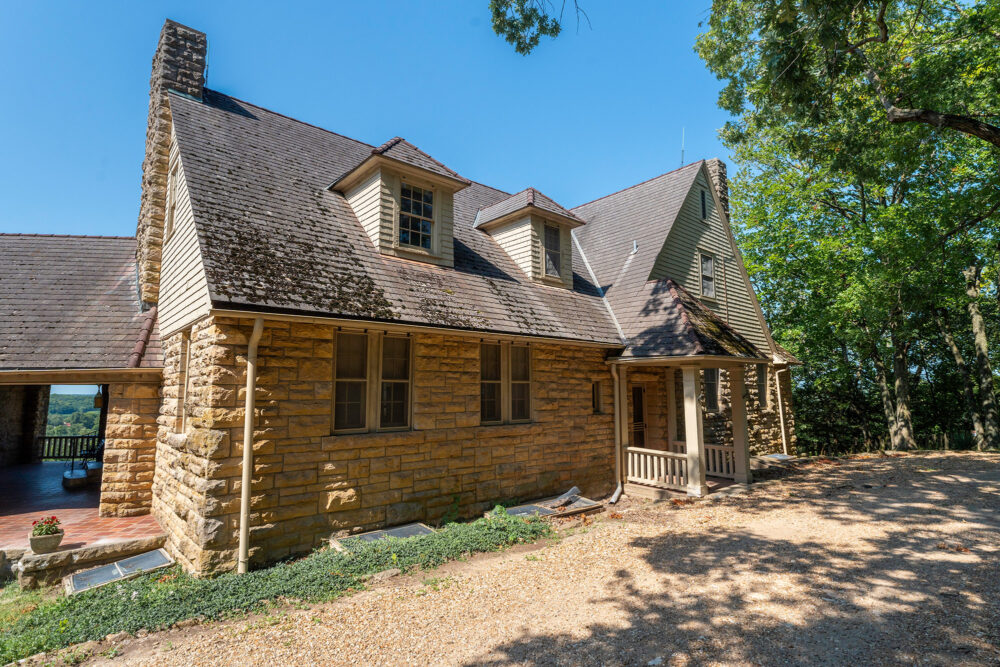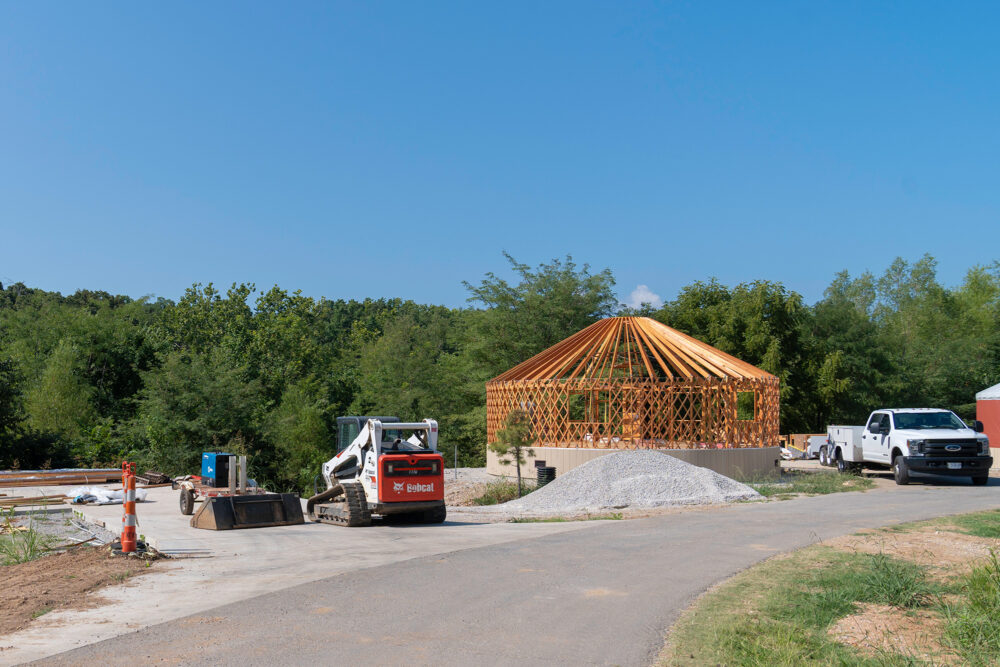Workers excavate an area of Echo Bluff State Park as they begin constructing new cabins.
Published by
on
Known for breathtaking sights, natural beauty and memorable experiences, Missouri State Parks is taking note worthy steps toward improvements. Composed of 93 state parks and historic sites, each with unique features, Missouri State Parks is making significant progress on a list that includes not only capital improvement projects, but revenue bond projects, water and wastewater improvements, and new construction initiatives as well.
Every year, Missouri State Parks plans and manages numerous capital improvement projects at state parks and historic sites. These efforts help support our mission of preserving and interpreting the finest examples of Missouri’s natural landscapes and cultural landmarks, while providing healthy and enjoyable outdoor recreation opportunities.

Our significant investment in these projects has enabled Missouri State Parks to undertake crucial infrastructure improvements. Key objectives include:
Safety and Stewardship
Missouri State Parks maintains and upgrades trails, roads and other park infrastructure. This creates a safer, more sustainable environment for visitors while protecting the state’s unique ecosystems. Some of these new trails include the Spirit Trail at Knob Noster State Park and trails at some of the newer state parks, like Bryant Creek State Park. Other parks have completed and restored portions of their trails, and some have even expanded their trail system, adding new paths for hiking and biking. Missouri State Parks has also implemented accessibility improvements and upgrades to make our parks more accessible, including the adding of beach chairs at every state park beach and more track chairs in each region.
Increased Visitation
In response to a surge in park visitation, Missouri State Parks has made infrastructure improvements to accommodate the growing number of visitors. By expanding and enhancing facilities, we hope to provide park-goers with a more enjoyable experience.
Tourism and Outdoor Recreation
By enriching the visitor experience and contributing to continued growth, well-maintained parks will attract more visitors and generate more revenue for local communities. Moreover, these projects help create jobs and foster long-term economic growth.
“When we make improvements to historic sites, trails, campgrounds, restrooms, shower houses, parking lots, lodging and signage, visitors find their stays more enjoyable, comfortable and safer,” said Laura Hendrickson, director of Missouri State Parks.
“There’s no doubt that the size and number of projects we’re seeing is unprecedented,” Hendrickson said. “This is the biggest investment in the park system we have seen since the Civilian Conservation Corps in the 1930s. We have more than $220 million in appropriated funds for capital improvement projects in our parks and historic sites. We are constantly working to upgrade and improve our parks to meet visitor demands.”
Some capital improvement projects include construction at parks like Lake of the Ozarks State Park, where new campsites, improved restrooms and updated electrical hookups enhance comfort and convenience for campers. Other projects include updates and improvements, such as roof replacement at Bothwell Lodge and Hunter-Dawson state historic sites.
The funding for these upgrades and improvements is made possible thanks to Missouri’s Parks, Soils and Water Sales Tax. Missouri State Parks receives half of this one-tenth of 1% dedicated constitutional tax, which in turn provides about three quarters of the division’s budget for operations and developing state parks. The other half of the tax revenue goes toward Missouri’s soil and water conservation efforts.

This consistent funding helps Missouri State Parks maintain its current system, as well as provide upgrades and renovations while still protecting our natural, cultural and historic resources. All additional funding for Missouri’s 93 state parks and historic sites comes from revenues generated in the park system and through some federal funds.
Another big boost to the system’s budget came from American Rescue Plan Act dollars allotted during the pandemic. Missouri State Parks received $40.9 million in ARPA funds for 33 projects (14 drinking water and 19 wastewater) across 24 parks and historic sites, all of which are on track to be completed by December 2026. Many of the projects are also coming in under design estimates.
“It’s really exciting to see several companies bid on the projects,” Hendrickson said. “The ARPA investment came at an opportune time, too. We are updating campgrounds and lodging throughout the state park system.”
Thanks to the sale of revenue bonds, new lodging options at Johnson’s Shut-Ins, Echo Bluff and Table Rock state parks cater to visitors who seek a more comfortable overnight experience without sacrificing the opportunity to enjoy nature.
The $60 million worth of revenue bonds sold in 2021 are starting to produce completed projects. Most of the projects fall into two main categories: campground upgrades and expansion with a lifespan of up to 40 years, and development of new cabins with a lifespan of up to 80 years. Occupancy data for camping and lodging, visitor comments and park staff recommendations, helped select projects to fund with revenue bonds.
Visitor demand for additional lodging and campsites in parks continues to increase, including the need for campsites with upgraded amenities, such as 50-amp electric, sewer and water hookups. In response to demand for more lodging opportunities, the revenue bond project proposal include campground expansions and full-service cabins, as well as camper cabins and yurts, which have proved very successful in our parks.
“In the last 10 years, we’ve invested $100 million in construction projects, with 95% of the contracts going to Missouri contractors,” said Hendrickson. “We’re proud of this, as the Missouri legislature has allowed us to invest $220 million in projects. An investment in Missouri State Parks is an investment in Missouri for all Missourians.”
These timely investments come as Missouri’s state parks are experiencing a surge in visitation and are aiming to enhance everyone’s overall experience. In 2024, Missouri’s state parks and historic sites attracted more than 20 million nature enthusiasts, history buffs and adventure seekers. “The growing popularity of our parks and historic sites underscores the need for significant investments to maintain their appeal and meet the rising demand for outdoor recreation opportunities,” said Hendrickson.
The first revenue bond project to reach completion provided a much-needed update to an outdated lighting system at Onondaga Cave State Park. The new lighting provides visitors with a more enjoyable cave tour, illuminating more of the cave’s formations and natural beauty.
“The new lighting benefits the cave’s ecosystem by reducing invasive algae growth and providing a more suitable home for the cave’s inhabitants, who are accustomed to the dark,” said Ken McCarty, retired Missouri State Parks Natural Resources Management Program director.
As Missouri continues to invest in its state parks, the strategic focus is on maintaining and improving the infrastructure while protecting natural and cultural resources. Future plans include expanding accessibility, upgrading visitor centers with interactive exhibits and creating new recreational opportunities to accommodate growing interest in outdoor activities. By prioritizing both visitor amenities and environmental protection, Missouri’s state parks will continue to be available to enrich lives for generations to come.











